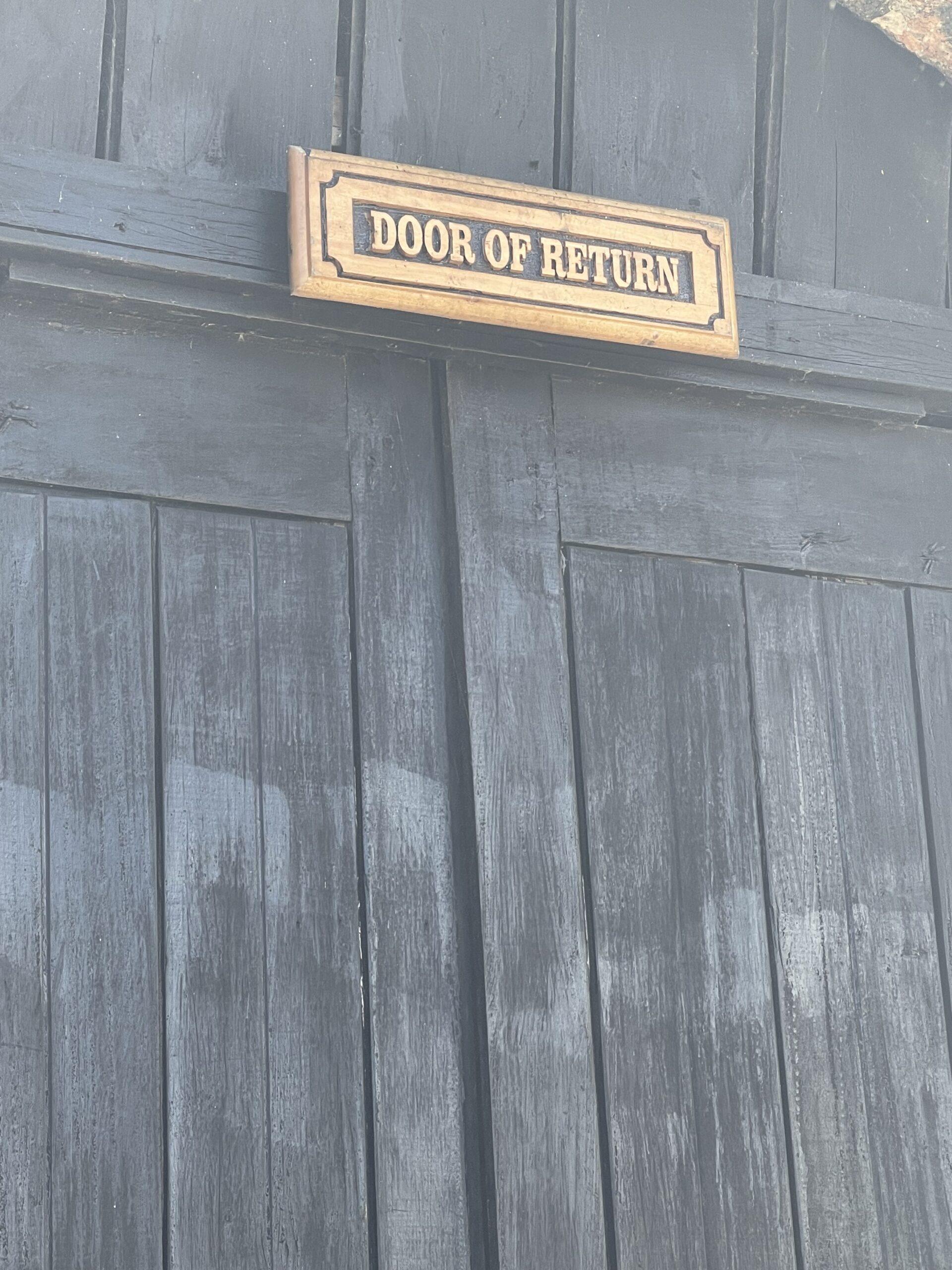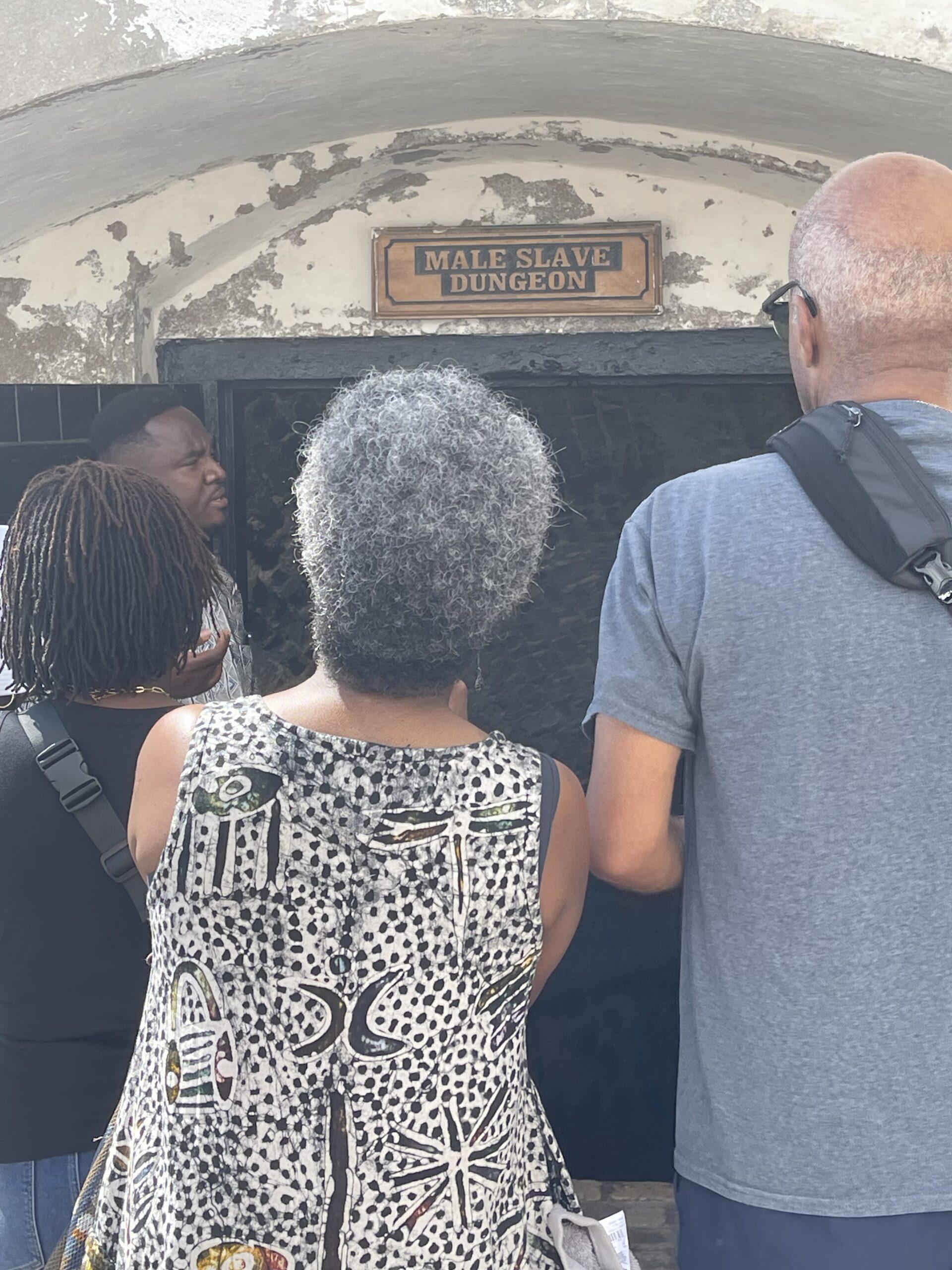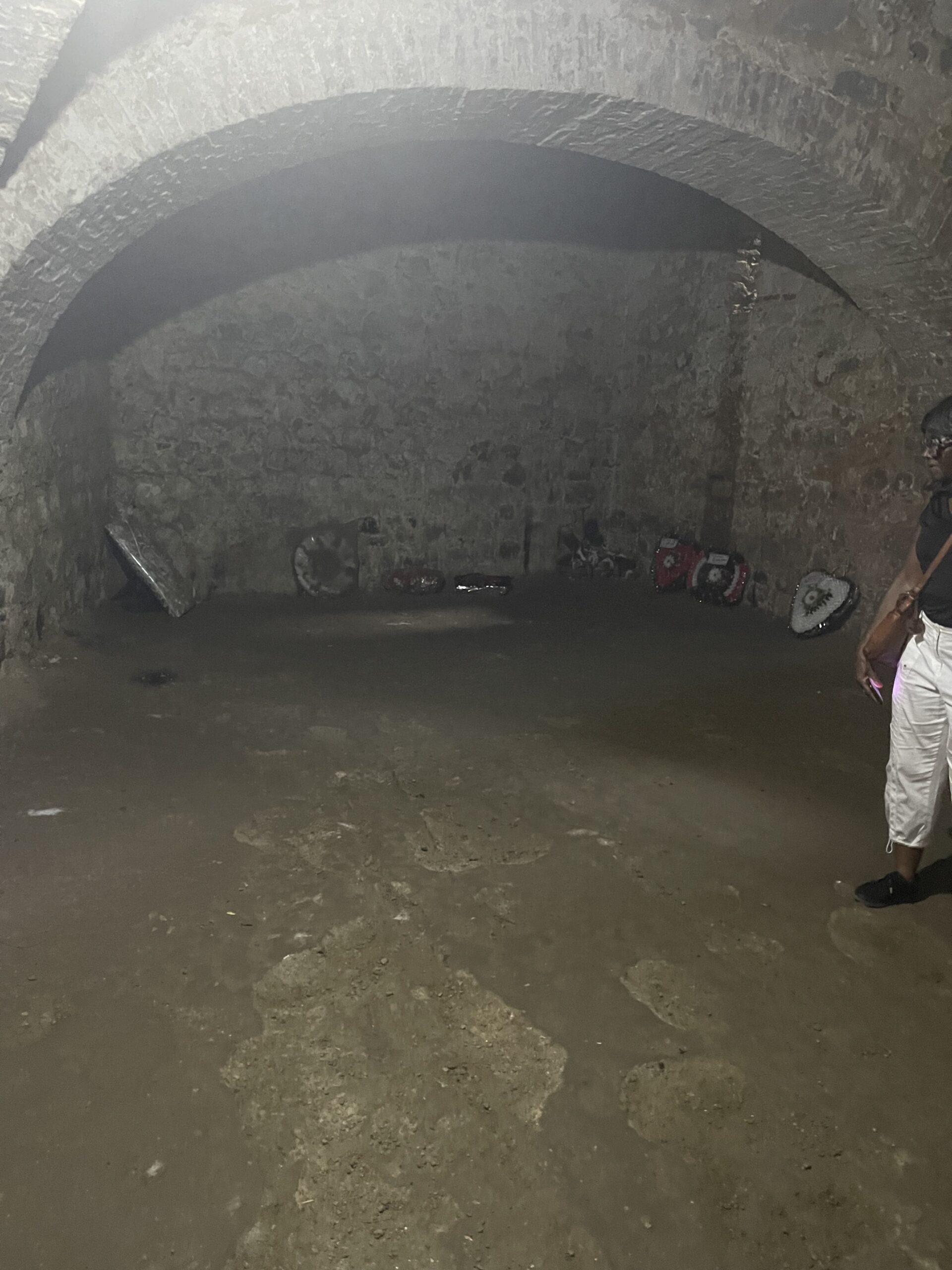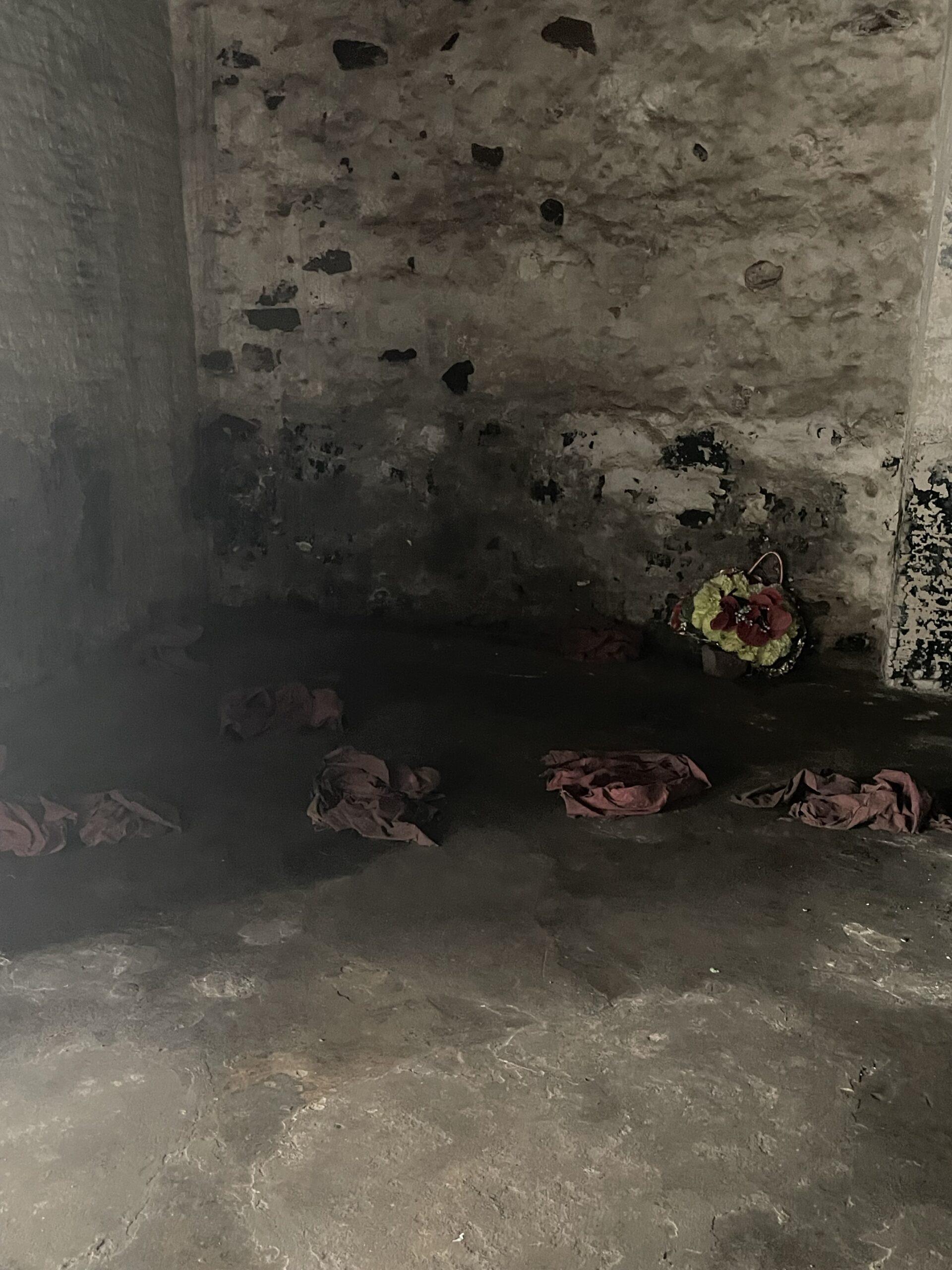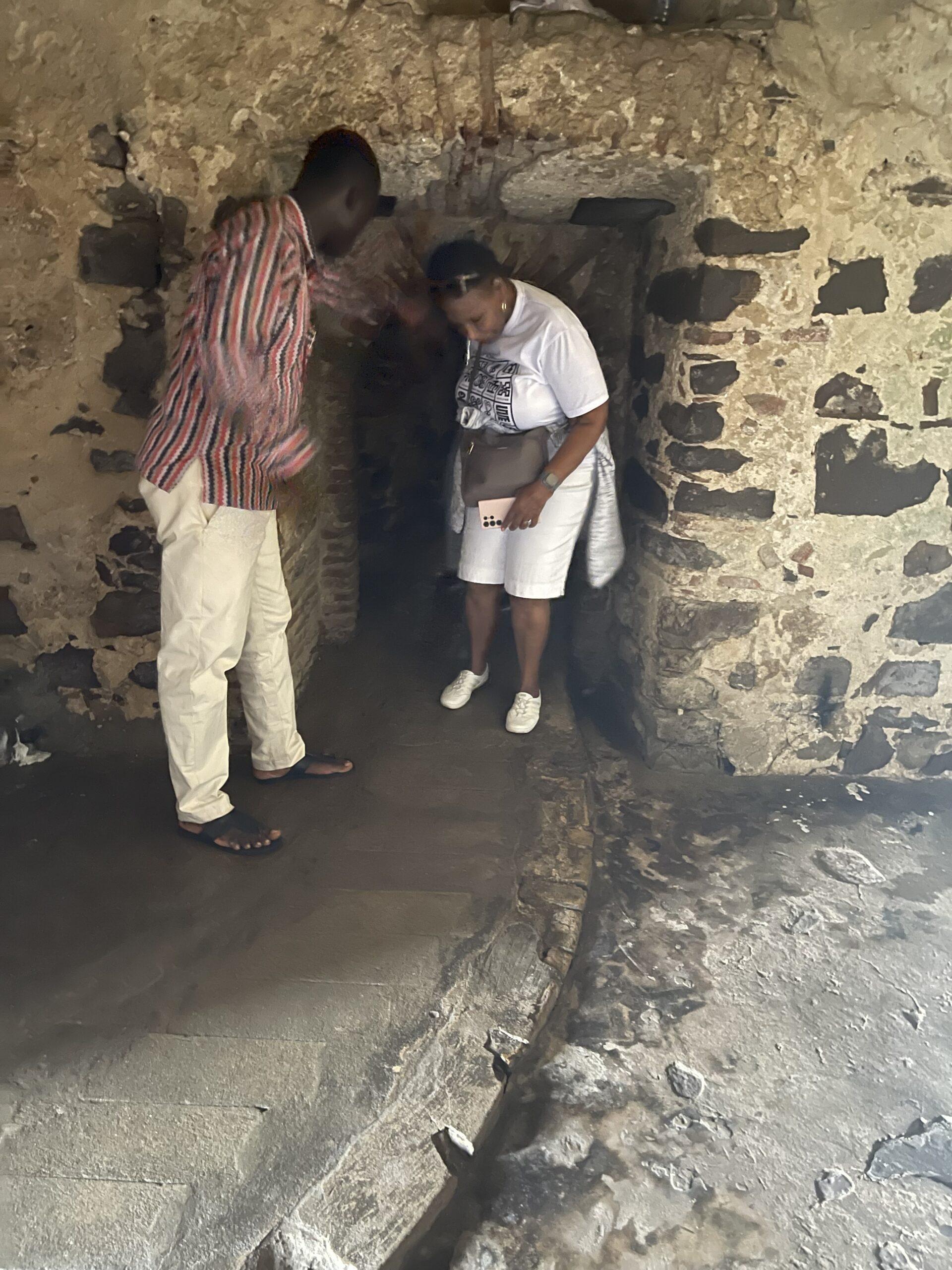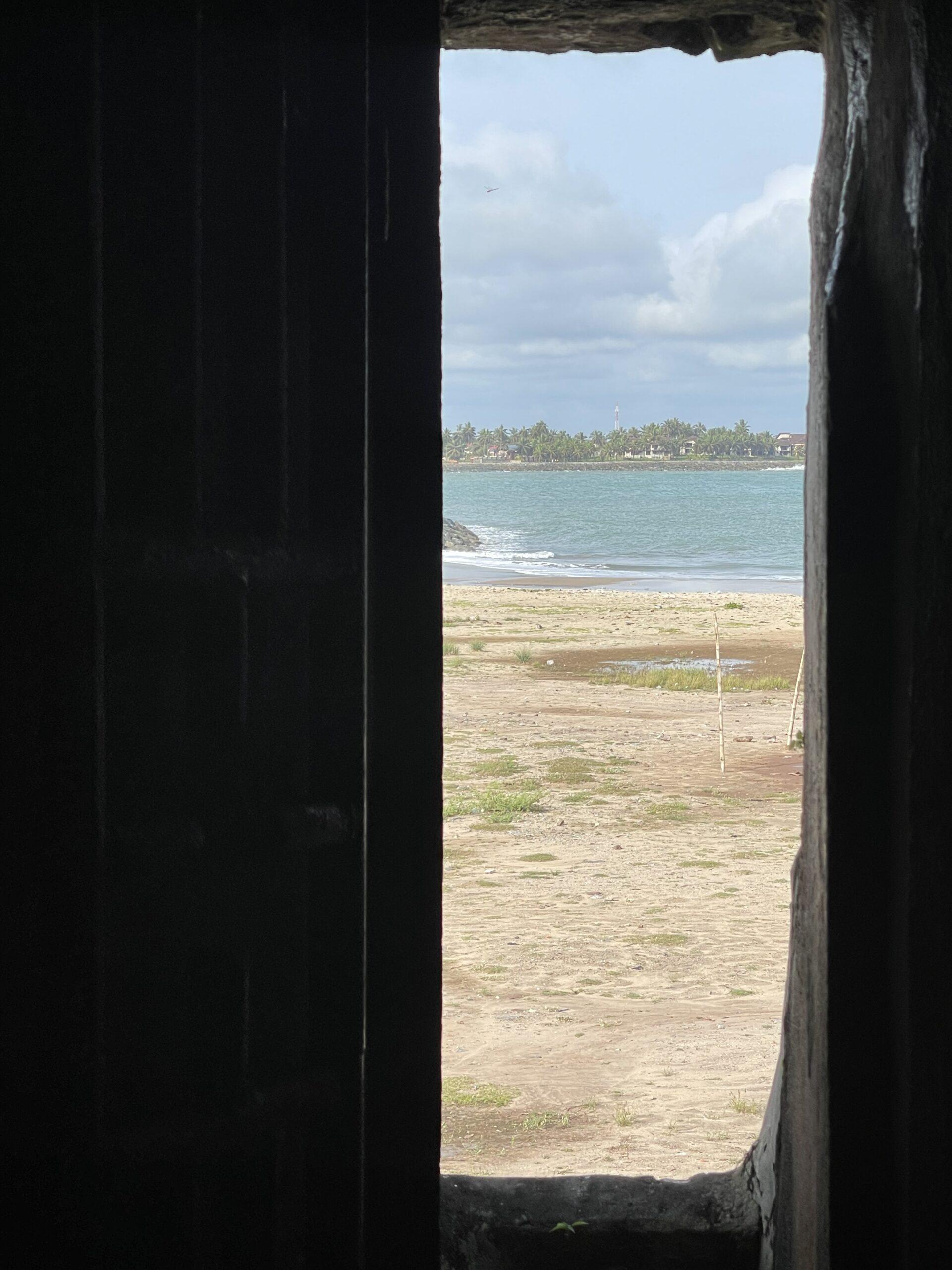
Behind Closed Doors: Exploring the Shocking Cruelty Endured by Africans at St Georges and Cape Coast Castles
I recently traveled to the Republic of Ghana, West Africa, specifically to see the DOOR OF NO RETURN. I visited St Georges and Cape Coast Castles – the two most infamous architectural structures in West Africa that became chambers of torment during the era of transatlantic slavery. It was an emotional journey as the guide shared the history my people endured behind closed doors, away from the public eye. These castles served as holding pens for captured Africans who were then transported to the New World for enslavement.
Located along the coast of Ghana, the castles were initially built by European traders for commercial purposes but were later used as major hubs for the transatlantic slave trade. Despite their beautiful scenic locations, located on the Gulf of Guinea of the Atlantic Ocean, these castles have a dark history of unspeakable cruelty and human suffering.
The construction of these castles began in the 17th century with the arrival of Portuguese traders to West Africa. The European powers that followed – including British, Dutch, Swedish, and Danish – also built their own forts along this stretch of coast for trade purposes. These forts were strategically positioned along the Gold Coast (now Ghana) as it was a major supplier of gold, ivory, and other valuable resources at that time.
However, what started as trading posts soon turned into warehouses for human beings. In search of cheap labor for their plantations in America and Caribbean islands, Europeans began trafficking Africans from various parts of West Africa to the castles before transporting them on grueling voyages across the Atlantic Ocean.
The conditions inside these castles were unimaginable. Africans captured by neighboring tribes or traded by African rulers would be held captive in overcrowded dungeons with little food or water. They were forced to endure extreme heat, disease-infested environments and horrific living conditions while they waited for their turn to go through the DOOR OF NO RETURN.
Upon reaching the coast, these traumatized individuals were crammed onto overcrowded ships commonly known as ‘slave vessels.’ These ships had inhumane conditions – slaves were packed tightly together with no room to move or lay down comfortably. They remained below deck for most of the journey which could last several months depending on weather conditions. This experience became known as the “Middle Passage” – aptly named due to it being considered as “the middle” stage between captivity in Africa and enslaved in another land.
The origins of this trade can be traced back to European exploration and colonization of the New World in the 15th century. As Europeans began establishing colonies in North and South America, they needed large numbers of laborers to cultivate crops such as sugar, tobacco, and cotton. The indigenous population was decimated by diseases brought by European colonizers, leading the colonizers to turn to Africa for a steady supply of labor.
At first, enslaved Africans were captured through warfare or kidnapping by local African rulers who then sold them to European traders for goods such as guns, textiles, or alcohol. However, with increased demand for slaves in the Americas came an organized and highly profitable system of slave trading that operated on a massive scale.
The vast majority of enslaved Africans were taken from West and Central Africa – primarily modern-day Senegal down to Angola – due to its geographical proximity to Europe and its abundant natural resources. This region became known as “the Slave Coast” due to its role within this despicable trade.
The transatlantic slave trade, also known as the triangular trade, was a horrific and exploitative system of human trafficking that lasted for over 400 years. It involved the forced migration of millions of Africans from their homelands to the Americas to work as laborers on plantations and in other industries. This brutal trade had far-reaching effects on African societies, political structures, and economies, shaping the history of the continent for centuries to come. For many Africans, this was their first encounter with Europeans. They were met with violence, intimidation, and harsh treatment throughout the journey. The physical conditions were grueling; they endured extreme temperatures, inadequate food and water supplies, as well as brutal punishments for any slow walkers or attempts to escape.
The journey of captured Africans to the castles was a harrowing and traumatic experience that would ultimately lead to a lifetime of suffering for those who were “STRONG” enough to be sold into slavery. The capture and transportation of Africans from their homes in various regions across West Africa to the castles is a crucial chapter in the history of transatlantic slave trade, and one that is often overlooked.
NOTE: We visited the site of the LAST BATH. The captives were placed, in chains, in the rushing river. Those who could swim would try to get away. Many drowned, while being dragged by others and the river. The guide invited us to walk down to the river barefoot in order to feel the ground and soil they walked on. I put my foot in the River for a few minutes and felt the anger of the churning river. This was one of my transforming experiences.
One of the most shocking aspects of my visit to the castles was the inhumane living conditions endured by slaves. The dungeons were crowded and filthy, with little to no ventilation or natural light. These small spaces were often overcrowded with hundreds of slaves packed together like sardines. Adding to this physical agony was the psychological torture endured by slaves inside these castles. They were stripped of their identities, separated from their families and communities, and treated as mere commodities by their captors. This was purposeful to gain complete submission and total dependency on their masters. The constant feeling of confinement and helplessness created a sense of despair among the enslaved population. Many captives suffered from anxiety, depression, and other mental health issues due to their living conditions at these castles. Many would spend years trapped within these walls without knowing what fate awaited them.
Moreover, one cannot overlook the appalling state of sanitation in these castles. With no proper waste disposal system in place and limited access to clean water for bathing and drinking purposes, disease outbreaks were rampant. The already crowded spaces became breeding grounds for deadly infections such as smallpox, malaria, typhoid fever, dysentery, and more. Unfortunately, sick individuals received minimal care or attention from their captors which resulted in a high mortality rate.
NOTE: In one of the rooms the guide asked the 13 of us to be still. He then closed the door, so no air was flowing. He turned off the light – total darkness – and asked us to imagine 125 women in that room. The floors of the rooms seemed elevated and uneven and we were told it’s the accumulation of YEARS and YEARS of vomit, tears, blood, sweat, mucus and feces that just built up. Many resorted to drinking their own urine in an attempt to survive. It was imperative that Irun my hands along the walls, because my ancestors were held captive here. They endured and survived all that BEFORE getting on the ships and I/you were born of with that strength. The survivors are our ancestors.
The brutal treatment endured by Africans at St Georges and Cape Coast Castles during the transatlantic slave trade is a grim reminder of the atrocities committed by European colonizers. Behind closed doors, away from the public eye, these castles served as holding pens for captured Africans who were then transported to the New World for enslavement.
But it was not just physical torture that these Africans endured; they also faced constant emotional and psychological trauma. Captors would use fear tactics such as beatings and threats of violence to control their captives. Children were often separated from their parents, leaving families torn apart and emotionally scarred.
Psychological trauma and abuse are often overlooked when discussing the transatlantic slave trade, but they were rampant in the daily lives of enslaved Africans at St Georges and Cape Coast Castles. The physical torture and forced labor endured by these individuals is well documented, but the lasting effects of their psychological suffering have only recently begun to be recognized.
Those deemed disobedient or troublesome were often chained together, shackled to walls for extended periods of time or left to die.
Enslaved African women were particularly vulnerable.
NOTE: The soldiers often stood on the 2nd level looking over the courtyard to choose the women they wanted to rape. The women were brought up the back stairs and if they resisted in any way, they would be taken to a small dark room to stay until they died. The men who resisted, were taken to the “courtyard” and raped by the soldiers while everyone else was forced to watch. Then they had to wear their pants around their behind rather then their waist, so everyone knew what had been done to them.
Verbal insults, threats and manipulation were also used as means of control and degradation
Resistance and rebellion were common occurrences within the Closed Doors. One form of resistance was through physical acts of rebellion. Enslaved individuals would often try to escape from the castles by any means necessary and some managed to successfully escape and regain their freedom. Some learned how to read and write in secret. With this knowledge, they could communicate with each other about plans for rebellion or escaping. Education, even today, is still the answer!!
One notable act of resistance was the 1776 revolt at Cape Coast Castle led by a woman named Nanny Morello. She organized a group of fellow enslaved women and together, they overpowered the guards and took control of the castle for several hours before eventually being subdued by British soldiers. Most rebels were eventually defeated and punished severely with many being executed or thrown off cliffs into the sea. Despite the horrific odds, many brave individuals found ways to resist and assert their humanity in subtle yet powerful ways.
One form of everyday resistance was spiritual defiance. Enslaved Africans brought with them their rich cultural traditions, including their religious beliefs and practices. While many European colonizers attempted to forcibly convert them to Christianity, most enslaved Africans held on tightly to their traditional belief systems. They continued to perform sacred rituals and traditions secretly within the castle walls, despite facing punishment if discovered.
I began this blog by sharing how I could not talk about my experience when I returned to the States, because I would begin to cry. That’s part of it…I left the Castles so angry I could not even process what I had heard, felt and seen till now. I asked our guide how he could share this story 5-6 times per day, and he said the world must know. Well, now I know and you do too. We African Americans are related because our ancestors survived. They endured and survived and fought for us – their Legacy.
So, why do we fight and kill each other? Why do we call each other names? I raised these questions to a gentleman, born in Ghana, and has been in America over 25 years. He said African Americans are BORN enslaved. We learn the consequences and the toll of being Black, early in life. He said we fail to realize and appreciate much of who we are is mimicked around the world. I believe we MUST take our children to see and feel what I witnessed. It truly has changed my life and made me even more proud to be a Black Woman.
I invite your thoughts about this blog. It took me about 20 years of knowing about the DOOR OF NO RETURN before I went to see it.
Don’t you wait that long…PLEASE!
I am Rita…speaking to your Spirit
